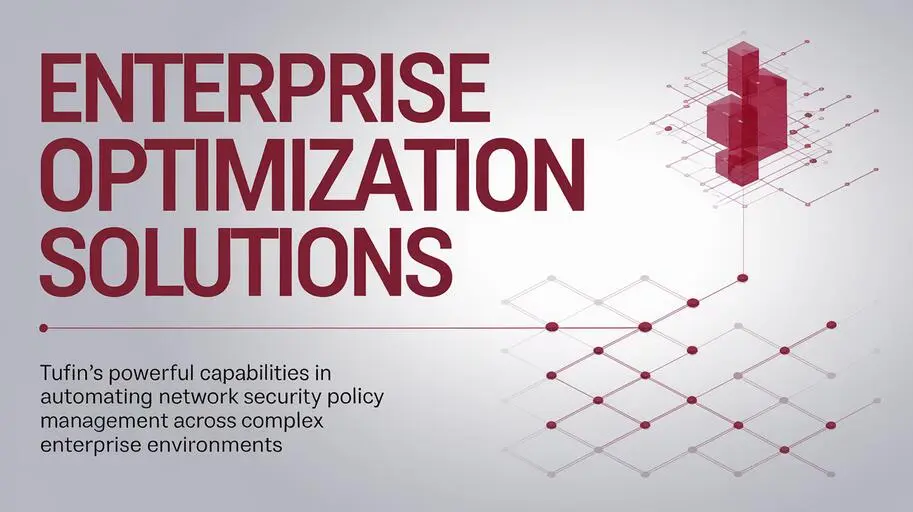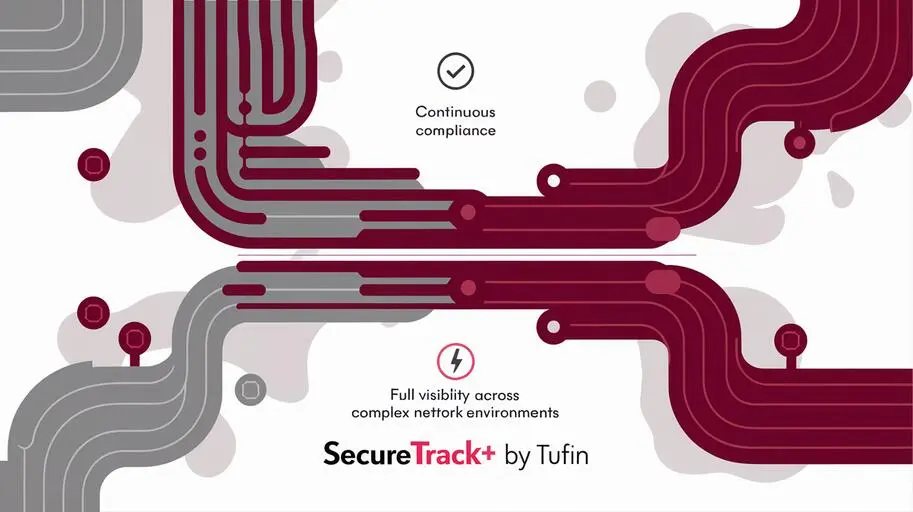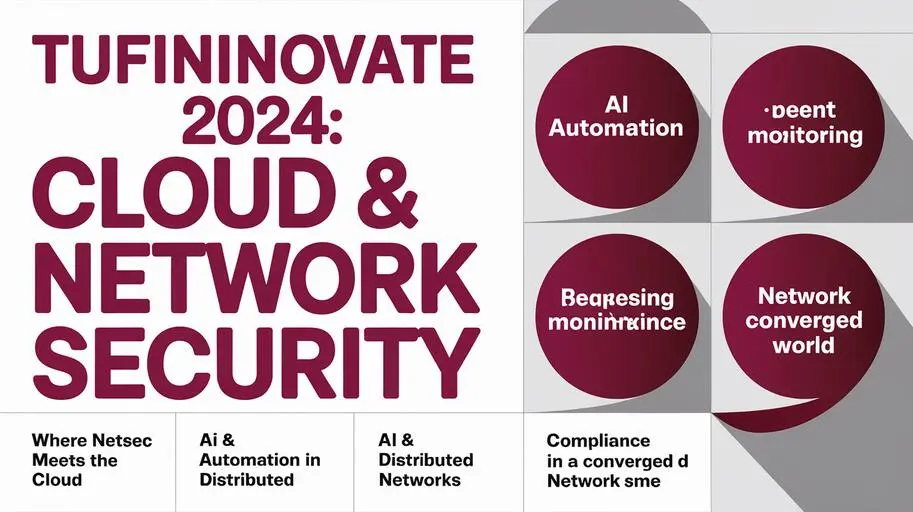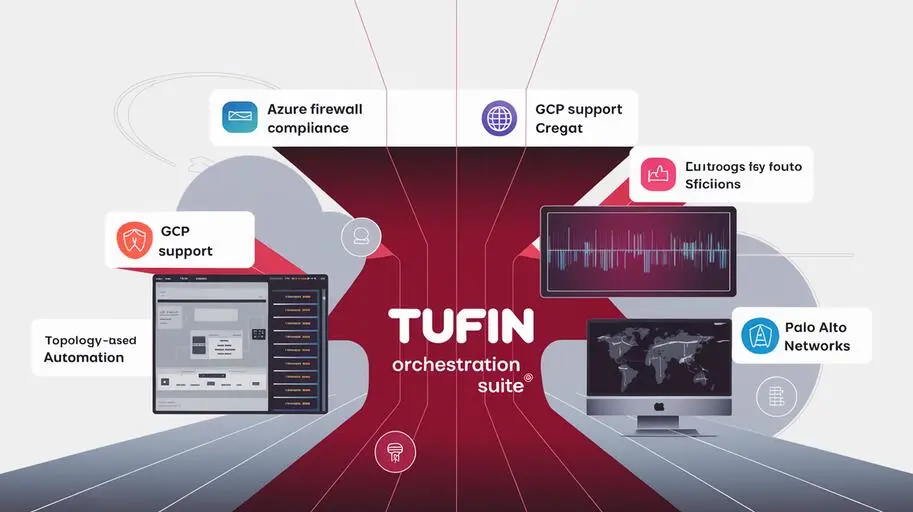
Tufin: A Comprehensive Solution for Application Connectivity Management
Tufin’s Application Connectivity Management solution is a comprehensive platform designed to simplify and automate the management of network security policies in complex and dynamic environments. It provides centralized management, security policy automation, and risk analysis, enabling organizations to significantly reduce the risk of security breaches and ensure compliance.
Tufin Solution Architecture: Components and Interaction
The Tufin solution architecture consists of several key components that work together to provide comprehensive security management. Here are the main components:
- SecureTrack: Provides network visibility and risk analysis by collecting network configuration and traffic data from various sources, including firewalls, routers, and switches. SecureTrack provides a consolidated network visualization, allowing security teams to understand the current security posture and identify potential vulnerabilities.
- SecureChange: Automates the process of making changes to security policies, from the change request to implementation and verification. SecureChange allows organizations to accelerate the change process, reduce the risk of errors, and ensure compliance. The workflow in SecureChange is customizable to the specific needs of the company.
- SecureApp: Ensures application security by allowing security teams to define and enforce security policies based on applications. SecureApp enables organizations to protect critical applications from threats and ensure compliance. The application map allows you to see the relationships between applications and the necessary access rules.
Tufin Integration: Extending the Platform’s Capabilities
Tufin’s integration with other security and IT infrastructure solutions is crucial for providing comprehensive protection. The Tufin API allows integration with various systems, including:
- SIEM (Splunk, QRadar): Tufin’s integration with SIEM allows security teams to correlate security policy data with security event data, providing a more complete picture of security threats and automating incident response.
- Vulnerability management: Tufin’s integration with vulnerability management solutions allows security teams to identify and prioritize the remediation of vulnerabilities in security policies based on information about current threats.
- Cloud environments (AWS, Azure, GCP): Tufin’s integration with cloud services allows security teams to centrally manage security policies in cloud environments, ensuring consistent protection and compliance across the entire hybrid infrastructure.
Application Connectivity Management with Tufin: Practical Application
Application Connectivity Management is a key function of Tufin, allowing organizations to control and manage access to applications on their network. This includes defining the traffic flows required for applications to work and ensuring that only authorized traffic can pass through the network, thereby minimizing potential attack vectors.
Security Policy Automation: Accelerating Processes and Reducing Risks
Security policy automation is one of the key benefits of Tufin. Tufin’s automation of security policy changes allows organizations to accelerate the process of making changes to security policies, reduce the risk of errors associated with manual configuration, and ensure compliance.
- Workflow automation: Tufin automates the process of making changes to security policies, from the change request through automated approval processes to implementation and verification, reducing task completion time.
- Risk analysis: Tufin analyzes the risks associated with changes to security policies and provides recommendations for mitigating these risks, preventing potential security breaches.
- Compliance: Tufin ensures compliance by automating the process of generating reports on security policies with details on compliance requirements, simplifying the audit process.
Microsegmentation: Enhancing Network Security
Microsegmentation is a method of dividing a network into small, isolated segments to limit the spread of security threats. Microsegmentation management with Tufin allows organizations to apply security policies at the level of individual applications or workloads, significantly reducing the risk of horizontal movement by attackers in the event of a compromise of one of the network segments.
Risk Analysis and Compliance with Tufin
Risk analysis and ensuring compliance are critical aspects of network security. Tufin provides the tools and functions needed to perform risk analysis, identify vulnerabilities, and ensure compliance with regulatory standards and internal security policies.

Security Audit and Security Reporting
Security audit and security reporting are important functions of Tufin, allowing organizations to track and control their network security. Tufin provides detailed reports on security policies, changes to security policies, and security events, allowing organizations to identify and address potential problems and demonstrate compliance to auditors.
Compliance with Regulatory Standards (PCI DSS, HIPAA)
Tufin helps organizations comply with various regulatory standards, including PCI DSS and HIPAA. Tufin automates the process of generating reports on security policies and ensures compliance by providing tools for monitoring and maintaining compliance with necessary security controls.
Tufin Deployment and Tufin Integration: Getting Started
Tufin deployment and Tufin integration can be done in various ways, depending on the organization’s needs and its infrastructure architecture. Tufin can be deployed both on-premises and in cloud environments, supporting various deployment models. Tufin can also be integrated with other security and IT infrastructure solutions through the Tufin API and pre-built connectors.
Tufin Configuration: Customizing the Platform to Your Needs
Tufin configuration involves setting up the platform’s parameters to meet the specific needs of the organization. This includes configuring data collection rules, defining workflows for making changes to security policies, setting up reports, and defining user roles and access rights to ensure platform security.
Tufin Troubleshooting: Solving Common Problems
Like any other software, Tufin can encounter problems. Tufin troubleshooting requires an understanding of the platform’s architecture and knowledge of typical problems, such as device connectivity issues, data processing errors, and performance problems. Tufin’s documentation and knowledge base contain detailed instructions for troubleshooting Tufin and best practices.
Tufin Benefits: Why Choose This Solution
The benefits of Tufin are clear: risk reduction, increased efficiency, and improved compliance. Tufin allows organizations to protect their network from security threats, accelerate the process of making changes to security policies, and ensure compliance by automating routine tasks and providing tools for data analysis and visualization.
- Improved visibility: Tufin provides a consolidated network visualization, allowing security teams to understand the current security posture and identify potential vulnerabilities and traffic anomalies.
- Automation: Tufin automates the process of making changes to security policies, reducing the risk of errors and accelerating the change process, freeing up resources for more important tasks.
- Compliance: Tufin ensures compliance by automating the process of generating reports on security policies and providing tools for monitoring and maintaining compliance with regulatory standards.
Application Security and Network Security with Tufin
Application security and network security are two interrelated aspects of protecting an organization from security threats. Tufin provides the tools and functions necessary to ensure application security and network security by integrating security policy management with information about applications and network infrastructure.
Ultimately, Tufin is a powerful and comprehensive solution for Application Connectivity Management and security policy automation. It provides network visibility, risk analysis, and compliance, enabling organizations to significantly reduce the risk of security breaches and improve operational efficiency by optimizing security management processes.
Implementing the Tufin application connectivity management solution allows organizations to significantly improve their security policies, reduce costs, and ensure compliance with regulatory standards. Thanks to SecureTrack, SecureChange, and SecureApp, Tufin offers a complete set of tools for managing network security and application security.
Take the first step towards optimizing your network security. Contact us today to request a personalized consultation, demonstration, or quote and find out how Tufin can help your organization.
FAQs on: Application Connectivity Management with Tufin
-
What is Tufin and how does it help with application connectivity management?
Tufin is a platform that automates security policy management and optimizes application connectivity management. It provides network visibility, risk analysis, and compliance, simplifying the management of complex network infrastructure and application connections.
-
What are the main components of the Tufin solution architecture?
The main components of Tufin are: SecureTrack (provides network visibility and risk analysis), SecureChange (automates the process of making changes to security policies), and SecureApp (ensures application security based on policies defined by security teams).
-
With what other solutions can Tufin be integrated and why is this necessary?
Tufin integrates with SIEM systems (Splunk, QRadar), vulnerability management solutions, and cloud environments (AWS, Azure, GCP). Integration provides a more complete view of security threats, allows you to identify and eliminate vulnerabilities in security policies, and manage policies in cloud environments.
-
What is security policy automation in Tufin and what are its advantages?
Security policy automation in Tufin allows you to speed up the process of making changes to policies, reduce the risk of errors, and ensure compliance. It includes workflow automation, risk analysis, and automated compliance reporting.
-
How does Tufin help with network microsegmentation?
Tufin allows you to manage microsegmentation by applying security policies at the level of individual applications or workloads, which significantly reduces the risk of security threats spreading within the network.
-
What regulatory standards does Tufin help to comply with?
Tufin helps organizations comply with various regulatory standards, including PCI DSS and HIPAA, by automating the process of creating security policy reports and ensuring compliance.
-
How can Tufin be deployed and integrated into an existing infrastructure?
Tufin can be deployed both on-premises and in cloud environments. Tufin can also be integrated with other security and IT infrastructure solutions through the Tufin API.
-
What are SecureTrack, SecureChange, and SecureApp, and what problems do they solve?
SecureTrack provides network visibility and risk analysis. SecureChange automates the process of making changes to security policies. SecureApp ensures application security, allowing you to define and apply security policies based on applications.
-
What are the main advantages of using Tufin for network security?
The main advantages of Tufin are: improved network visibility, automation of security policy management processes, reduced risks, and ensuring compliance with regulatory standards.
-
How does Tufin help organizations in risk analysis and ensuring compliance?
Tufin provides the tools and features needed to conduct risk analysis, identify vulnerabilities, and ensure compliance with regulatory standards. It automates security auditing and reporting.




